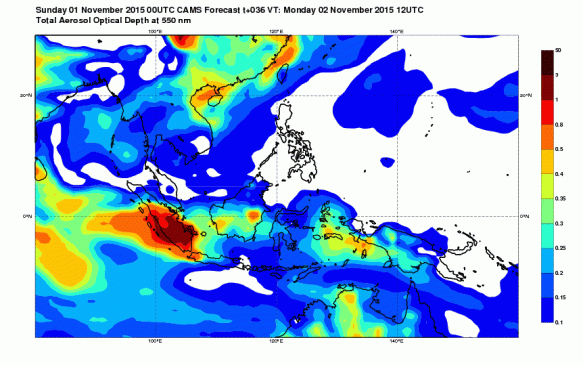The rain has arrived, and as the map above shows, the smoke and haze from this year’s fires is beginning to clear. Although particulate levels remain dangerously high in some areas, it is hoped that these will return to normal in the next few weeks.
But what now? Although 2015 has seen record-breaking carbon emissions and dangerous pollution levels that some have described as the worst environmental disaster of the 21st century, if the draining of peatlands and the careless application of fire to clear land continues a similar disaster could happen in just a few years if not sooner. As many have pointed out, the thick haze caused by burning peat and forests is not a new phenomenon in Indonesia, yet previous fires have not led to the determined action required to prevent them from being an annual occurrence. This year’s fires have been exacerbated by El Niño conditions, but bad fires also caused record-breaking pollution levels in 2013 when there was no El Niño.
There is increasing pressure from the international community, including from the Obama administration, to prevent a re-occurrence of the terrible fires which happened this year. There are now promises from the Indonesian government that action will be taken, particularly with regard to peatland restoration, but the international community must hold them to this action. If the right measures are put into place, not only would there be massive health benefits, but it may be one of the easiest ways for Indonesia to achieve its commitment to reducing carbon emissions by the promised 26% by 2020.

